Bounce workouts improve bone health through impact forces that stimulate osteoblasts, the cells responsible for building new bone tissue. When you bounce, you create high-magnitude compressive forces that increase bone mineral density in weight-bearing areas. These intermittent impacts trigger a piezoelectric effect, generating electrical signals that enhance bone formation. For those over 50, this targeted mechanical loading effectively counteracts age-related bone loss. Discover how just minutes of rebounding can transform your skeletal strength over time.
The Science of Bounce: How Impact Forces Build Stronger Bones
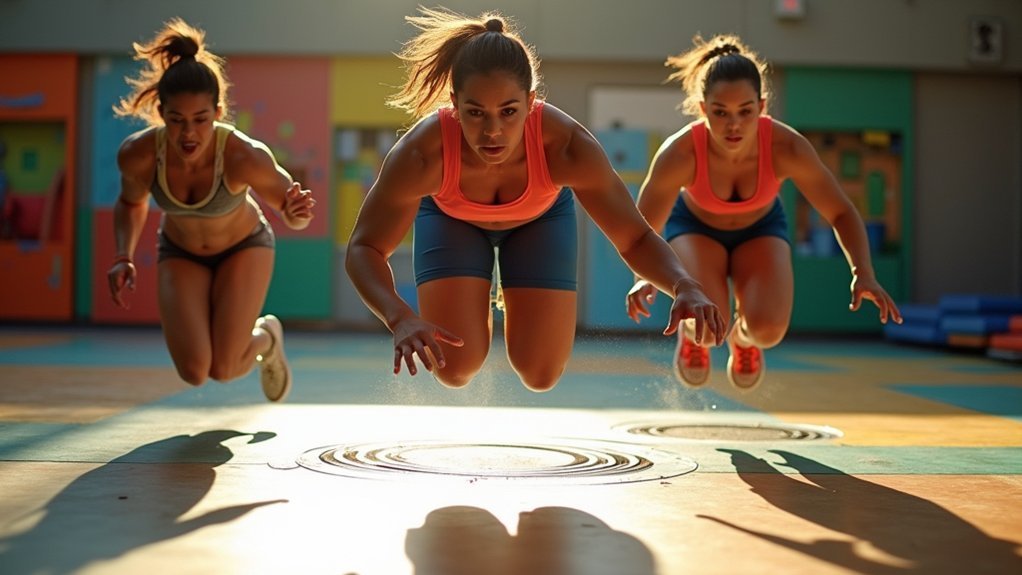
While most people associate exercise with muscle development and cardiovascular health, the impact forces generated during bounce workouts play a crucial role in bone strength.
Every time you land from a jump, you’re creating high-magnitude compressive forces that stimulate bone-building cells called osteoblasts. Your skeleton responds to these gravitational loads by increasing bone mineral density, particularly in weight-bearing areas like your femur and spine.
The faster your impacts (from higher jumps), the greater the osteogenic response. This process works through a fascinating mechanism: the mechanical stress triggers piezoelectric effects in your bone tissue.
Higher jumps create stronger impacts, generating electrical signals that literally build stronger bones.
What’s more, the muscle contractions required during landing generate tensile forces that further reinforce your bone microarchitecture, while diverse movement patterns distribute stress across bone surfaces, reducing fracture risk. Recent meta-analyses show these bounce exercises significantly increase cortical thickness at weight-bearing sites.
Bone Remodeling: Understanding the Cellular Response to Rebounding
Bone remodeling represents the cellular foundation that makes bounce workouts so effective for skeletal health. When you rebound, your bones experience dynamic loading forces that activate specialized cells within your skeletal system.
Your osteocytes, functioning as mechanical sensors, detect these bouncing movements and signal osteoclasts and osteoblasts to begin their coordinated work. While osteoclasts remove old bone tissue by creating resorption lacunae, osteoblasts follow by depositing new, stronger bone material. This cellular dance typically spans 120-200 days, depending on bone type.
What makes rebounding particularly effective is its high-frequency, dynamic nature. Your bones don’t respond to static loads—they crave the intermittent forces that rebounding provides. The sympathetic nervous system influences this process by regulating β-adrenergic receptors on osteoblasts, which respond to mechanical stimulation during bounce workouts.
Regular sessions enhance the coupling between cellular activities, improving bone density and strength over time.
Age-Related Bone Loss: Why Seniors Need Targeted Exercise

Your bones and muscles work as a team, with stronger muscles directly supporting healthier bone density as you age.
Impact training activities, like controlled rebounding, provide the mechanical loading your aging skeletal system requires to stimulate bone-forming cells.
You’ll find that these purposeful, weight-bearing movements can help counteract the progressive bone loss that accelerates after age 50, particularly in postmenopausal women.
This targeted exercise approach becomes increasingly important as women can experience over 4% annual bone loss during the first decade after menopause, significantly increasing fracture risk.
Muscle-Bone Protective Effect
As seniors age, the protective relationship between muscle and bone becomes increasingly essential for maintaining skeletal integrity. Your muscles apply direct mechanical stress to bones during resistance exercise, stimulating osteoblast activity and new bone formation. This muscle-derived force creates beneficial microdamage that signals remodeling and strengthens bone architecture. Engagement in regular weight-bearing exercises is particularly effective for improving bone mass and slowing bone loss in older adults.
| Exercise Type | Bone Benefit | Recommended Frequency |
|---|---|---|
| Weight-bearing resistance | Increases femoral neck BMD | 3-4 times weekly |
| Multi-directional movements | Enhances strain variability | 2-3 times weekly |
| Progressive overload training | Continual mechanical stimulation | Weekly progression |
| Combined balance/resistance | Reduces fall risk + improves strength | 3-5 sessions weekly |
You’ll benefit most from high-frequency loading (3-5 weekly sessions) and exercises targeting hip and spine to prevent osteoporotic fractures where they’re most common.
Impact Training Benefits
When it comes to maintaining skeletal health in later years, impact training offers critical benefits that directly counter age-related bone loss.
As you age, your bones lose density 3-5 times faster if you’re sedentary, but your skeleton remains adaptable to mechanical stimuli.
High-impact exercises create essential ground reaction forces that trigger osteoblast activity, improving bone mineral density and structural integrity.
Dynamic movements like jumping generate greater bone strain than static exercises, enhancing skeletal remodeling. Even short-term programs (20 weeks) can increase tibia strength by 3% in older adults. This is particularly important for women who experience a more pronounced decline in bone density during menopause.
You’ll get best results with 3 weekly sessions of varied impact levels and progressive intensity.
Research-Backed Benefits of Rebounding for Osteoporosis Prevention
While traditional weight-bearing exercises remain standard recommendations for bone health, mini-trampoline workouts (rebounding) have emerged as a promising intervention supported by scientific evidence.
Studies show 16 weeks of rebounding can increase femoral neck bone mineral density in women, a vital fracture risk site.
You’ll experience significant balance improvements after just 12 weeks, with 35% better single-leg standing time and reduced fall risk. Your functional mobility will improve too, as measured by decreased Timed Up-and-Go test scores and reduced fear of falling.
The full-body muscle engagement during rebounding enhances core stability and strength, while metabolic benefits like improved blood pressure and lipid profiles complement bone-specific enzyme changes that indicate enhanced remodeling processes. Regular mini-trampoline workouts provide the necessary pressure and tensile load that stimulates bone density growth.
Though lumbar spine benefits remain inconsistent, the evidence strongly supports rebounding for osteoporosis prevention.
Low-Impact, High-Reward: Safety Considerations for Senior Rebounders
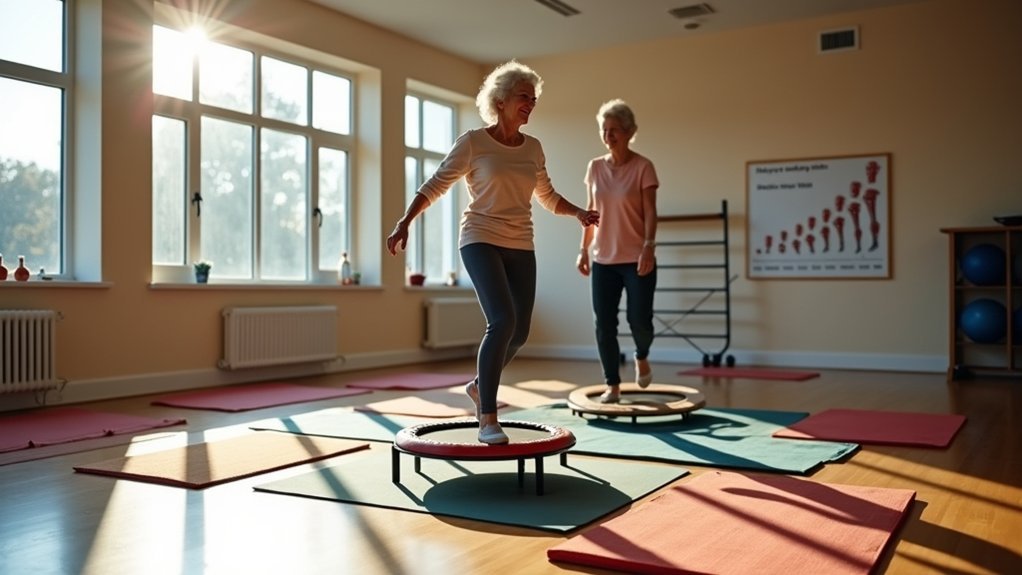
Despite offering substantial bone health benefits, rebounding must be approached with proper safety protocols to maximize results while minimizing risks for seniors.
Start with equipment safety: place your rebounder on a flat, non-slip surface and consider models with handlebars for balance support. Regular spring inspections prevent equipment failure, while low-impact models with bungee cords reduce joint stress.
Maintain proper form with slightly bent knees, engaged core, and controlled movements. Keep your gaze forward to protect your neck and guarantee knees track over toes for joint safety. Always maintain a micro bend in knees throughout your rebounding workout to prevent joint stress and protect your knees.
Begin with 2-5 minute sessions, prioritizing gentle bounces before increasing intensity. Allow 48-hour recovery between initial workouts and stop immediately if you experience pain.
Always warm up beforehand, cool down afterward, and maintain a clear 3-5 foot perimeter around your equipment.
Progressive Training: Building Your Bounce Routine Over Time
Establishing a progressive bounce routine allows you to safely build bone strength while avoiding the pitfalls of doing too much too soon.
Begin with gentle, low-height bounces that acclimate your joints to impact, then gradually extend sessions from 5 minutes to 20+ minutes as your body adapts.
Focus on proper core engagement during low bounces before introducing variety through unilateral movements and dynamic arm motions.
To maximize bone density improvements, target lower-body bones with moderate-height bounces and varied bounce patterns that distribute impact across multiple sites.
Incorporate intervals (30 seconds high-intensity followed by 1-minute rest) to build cardiovascular endurance.
For optimal safety during your routine, wear gym sneakers for better traction and stability on the trampoline surface.
Track weekly progress in stability and jump height, and schedule deload weeks every 4-6 weeks to allow for tissue adaptation and prevent overtraining.
Complementary Nutrition: Fueling Your Bones During Rebound Training
Just as your bones respond to physical stress during bounce workouts, they equally require proper nutritional support to optimize density gains and structural integrity.
Your rebounding sessions demand balanced macronutrients, with protein needs of 1.2-1.6g/kg body weight to support bone repair.
Prioritize calcium (1,000-1,200mg daily) from dairy and leafy greens, alongside vitamin D3 (600-800 IU) to enhance absorption.
Magnesium and vitamin K2 direct calcium to your bones, while adequate hydration (2-3L daily) guarantees nutrient transport.
Time your nutrients strategically: consume carbohydrates 1-2 hours pre-workout for energy, and protein (20-30g) with calcium-rich foods post-workout to trigger bone repair. Maintaining proper knee alignment during rebounding exercises ensures optimal bone stress distribution that maximizes strengthening benefits.
Reduce anti-nutrients by soaking grains and limiting excessive caffeine to prevent calcium loss.
Measuring Success: Tracking Bone Health Improvements From Rebounding
You’ll need proper bone density testing to accurately measure the impact of your rebound workouts, with DXA scans providing the gold standard for tracking changes in your lumbar spine and hip regions.
Regular monitoring through these scans can detect even small improvements in bone mineral density that might occur after consistent rebounding practice.
Beyond density measurements, specific biomarkers in your blood can signal active bone remodeling processes, offering earlier indications of positive skeletal adaptation before changes appear on imaging tests.
While some studies show modest benefits, research indicates that rebounding alone may not significantly increase bone density compared to higher impact exercises that create greater ground reaction forces necessary for bone strengthening.
Bone Density Testing Methods
Reliable measurement serves as the foundation for tracking your bone health progress from rebounding workouts. The gold standard is central DEXA scanning, which uses dual X-rays to precisely measure spine and hip density where fracture risk is highest.
While portable p-DEXA devices offer convenient wrist or foot assessments, they can’t evaluate critical skeletal sites. Ultrasound provides radiation-free heel measurements but lacks DEXA’s precision. For thorough analysis, quantitative CT creates 3D spinal images that separately evaluate trabecular and cortical bone.
During a DEXA scan, you’ll lie supine for 10-30 minutes with minimal radiation exposure (just 1/10th of a chest X-ray). The resulting T-score clearly identifies your bone status: -1.0 or above is normal, while -2.5 or below indicates osteoporosis. Your scan may also provide a Z-score that compares your results to people of your same age, gender, and body type.
For rebounding benefits, consider testing every 1-2 years.
Biomarkers Signal Bone Remodeling
While DEXA scans provide structural images of your bones, chemical signals in your blood and urine offer a different window into how rebounding affects your skeleton.
These biomarkers reveal the dynamic process of bone remodeling in real time. When you track markers like P1NP, you’re measuring new bone formation, while CTx levels indicate bone breakdown. Together, they paint a complete picture of your skeletal response to bounce workouts.
Osteocalcin and bone-specific alkaline phosphatase also signal active bone renewal. For consistent results, timing matters. These markers fluctuate throughout the day and can be affected by meals and kidney function. For most accurate assessment, blood samples should be collected in the morning after fasting, particularly when measuring CTx levels.
Frequently Asked Questions
How Do Bounce Workouts Compare to Swimming for Bone Density?
Bounce workouts greatly improve your bone density due to their high-impact nature, while swimming won’t enhance your BMD much since it’s non-weight-bearing. Choose bounce exercises if you’re specifically targeting bone health improvements.
Can Rebounding Help Reverse Existing Bone Fractures?
No, you can’t reverse existing fractures through rebounding. While it may strengthen surrounding bone and potentially speed healing indirectly through improved circulation, fractured bones require proper medical treatment to heal correctly.
Do Trampoline Shoes or Special Equipment Enhance Bone-Building Benefits?
While trampoline workouts improve bone density, there’s limited evidence that special shoes enhance these benefits. You’ll get bone-building results from consistent bouncing regardless of footwear, as it’s the impact that matters most.
How Quickly Do Bounce Exercises Show Measurable BMD Improvements?
You’ll see measurable BMD improvements with consistent bounce exercises within 6 months, especially in your femoral neck. Most clinically significant gains appear after 12 months when you maintain at least 3 sessions weekly.
Are There Genetic Factors That Influence Response to Bounce Training?
Yes, your genetic makeup markedly influences how you’ll respond to bounce training. Genes affecting bone density, collagen formation, and inflammatory responses can determine if you’re a high or low responder to these exercises.
In Summary
You’ve discovered a powerful way to strengthen your bones through bouncing workouts. As you incorporate rebounding into your routine, you’re stimulating bone-building cells while enjoying a low-impact exercise that’s accessible at any age. Remember to progress gradually, pair your workouts with bone-supporting nutrition, and track your improvements. Your skeleton’s responding to those gentle impact forces—you’re literally bouncing your way to better bone health.
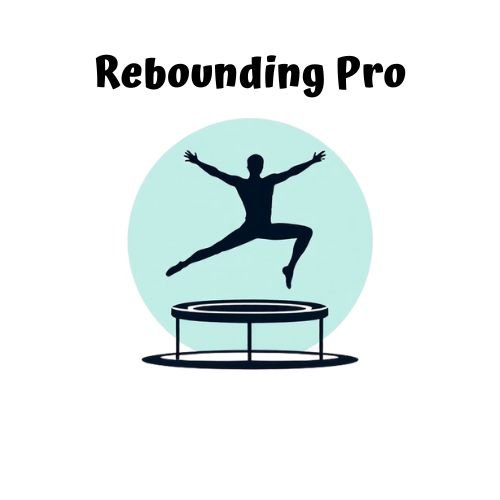
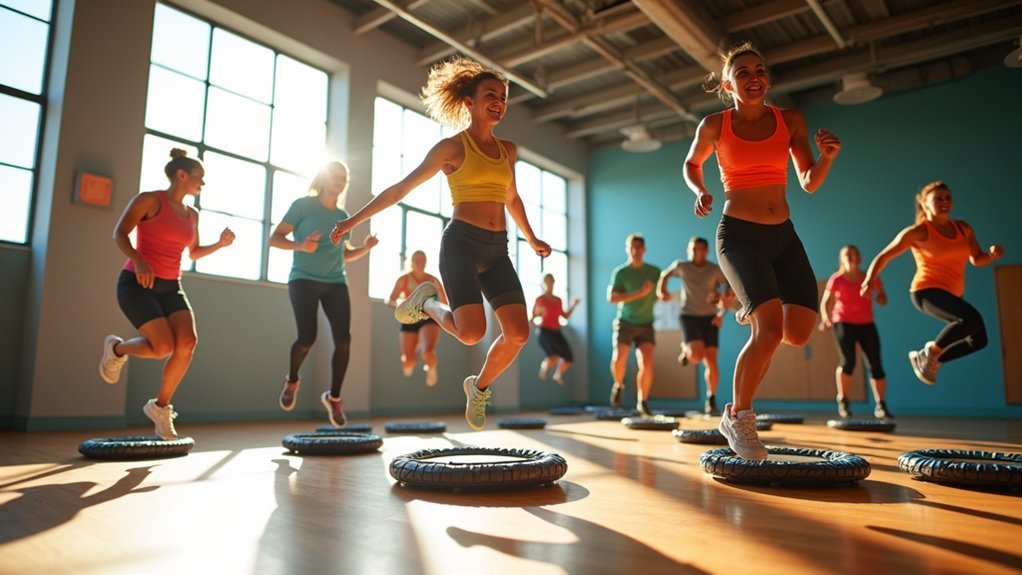


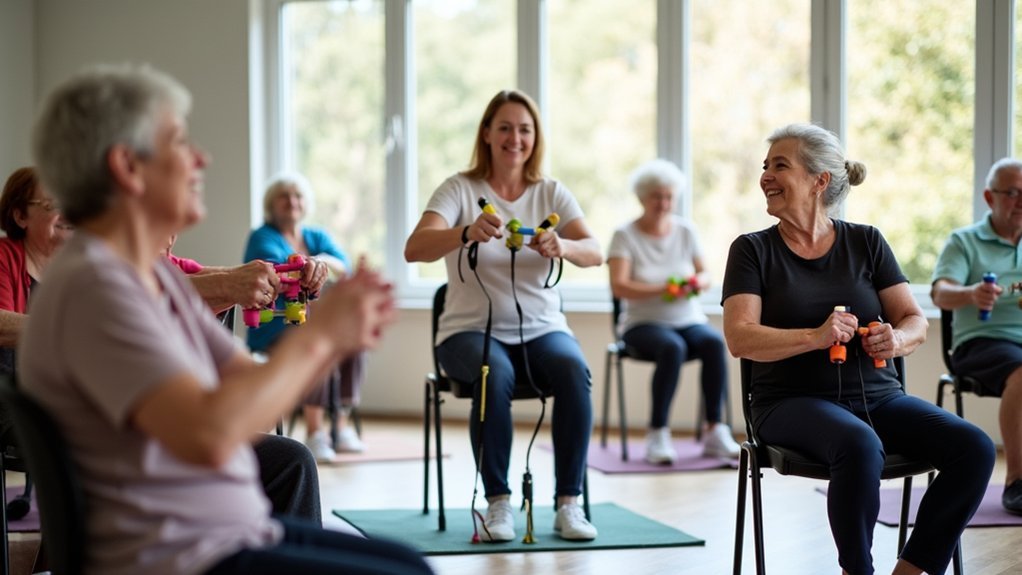
Leave a Reply